
Advertising & Brands
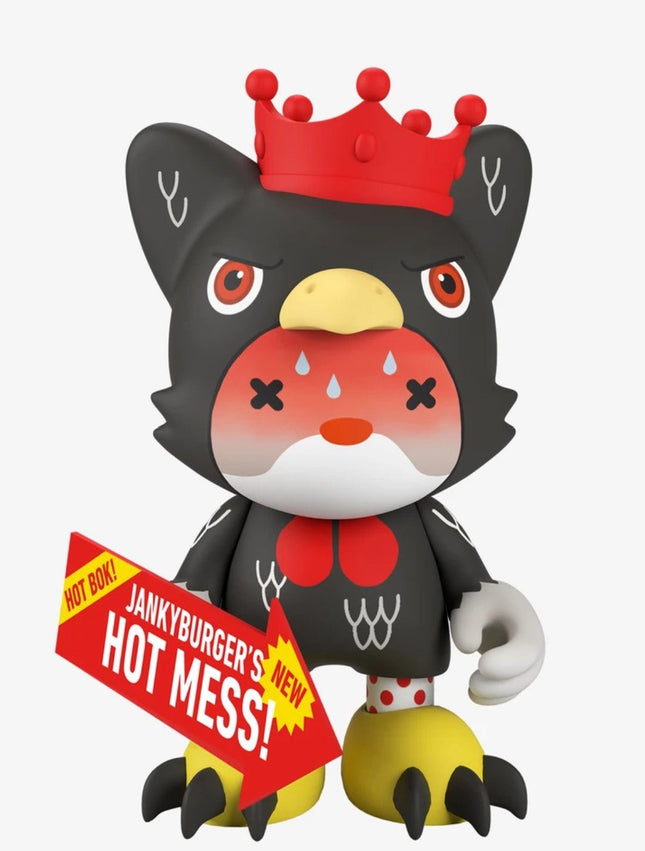
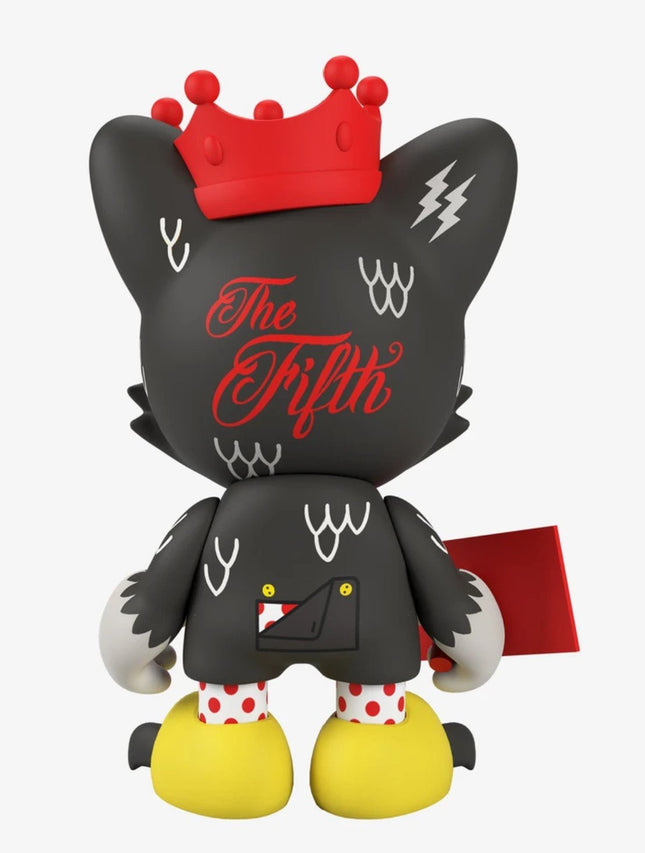
SuperPlastic General Jankys Hot n Sweaty Wings King Janky The 5.5 Art Toy by SuperPlastic
King Janky The 5.5 "General Janky’s Hot 'n Sweaty Wings" SuperPlastic Limited Edition Vinyl Artwork Street Art Toy Collectable Figure 2020 Displayed With Box. The fifth-and-a-half heir to the throne likes his wings like he likes his flings – hot 'n sweaty! Includes sign, chili crown, milk carton, and plenty of saucy to go around.
$74.00$47.00
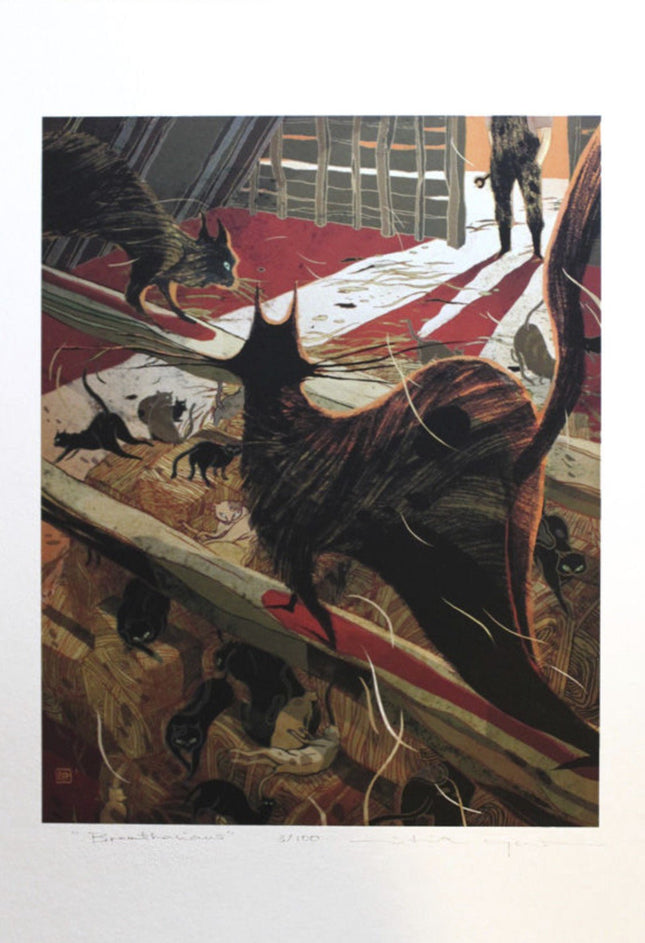
Victo Ngai Breatharian Giclee Print by Victo Ngai
Breatharian Artwork Giclee Limited Edition Fine Art Print on 100% Cotton Hahnemühle Museum Etching Paper by Pop Culture Graffiti Artist Victo Ngai. Callan Wink's short story "Breatharian" artwork was in the New Yorker magazine. Due to how this artwork was made and stored by the artist, many of Ngai's older prints contain slight yellowing to the extreme upper and lower white margin that extends about 1mm. This does not effect the image at all and the prints are perfect besides this.
$290.00
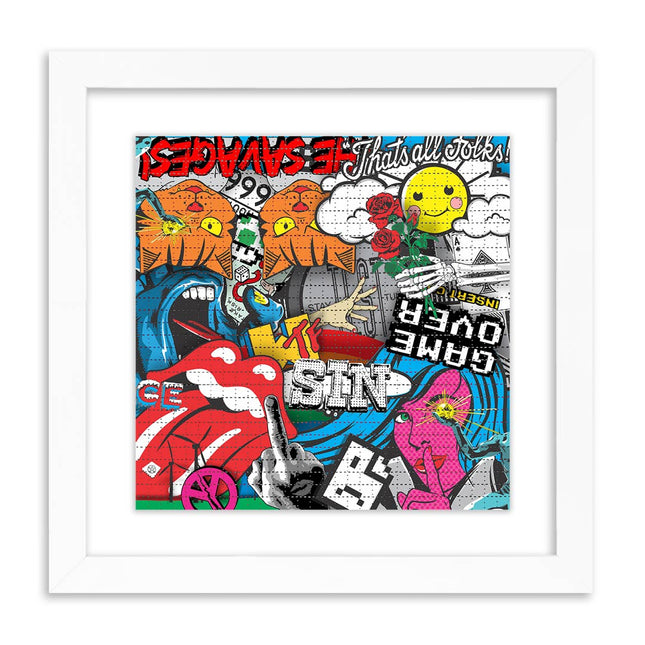
Denial- Daniel Bombardier Acid Test Results Blotter Paper Archival Print by Denial- Daniel Bombardier
Acid Test Results Blotter Paper Limited Edition Archival Pigment Print Art on Perforated Blotter Paper by Denial pop culture LSD artwork. In 2000 he adopted the moniker ‘DENIAL’ as a means of poking fun at advertising, politics, and media messages that contemporary society is often ‘in denial about. Since then he has maintained an ongoing global street-campaign of over 500, 000 stickers, placards, and murals, using the alpha-numeric characters ‘D3N!@L’. Intended as a conceptual means of marketing absurdism, DENIAL also challenges traditional notions of graffiti and public art through his bold and often satirical visual subversions. Denial has evolved as one the most prominent figures of contemporary pop artists, who nonetheless, continue to stay relevant and is interested in generating thought-provoking commentary. He has a long history of exploring the boundaries of appropriation, which he uses as a means of subverting the value of cultural products, imprinted in the collective memory of the Western civilization. His work, in other words, is inviting the viewer to re-imagine our dystopian society as a way of confronting it, with humor and irony as the biggest tools of the artist.
$422.00
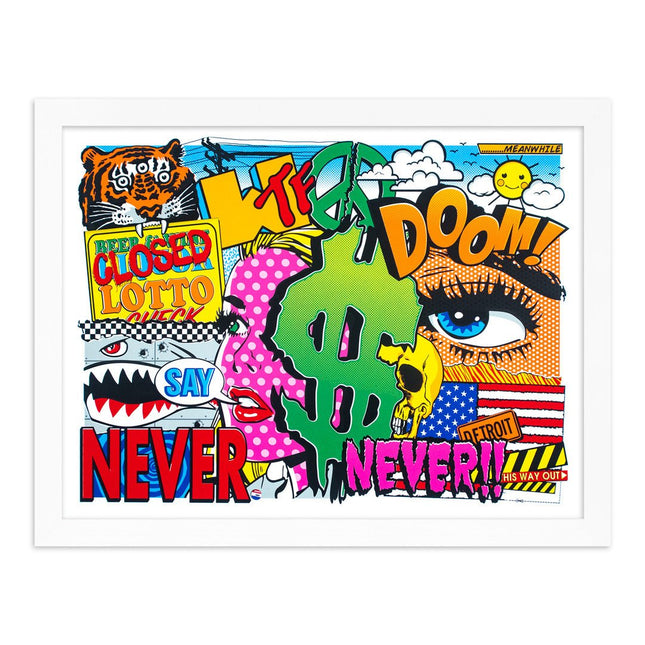
Denial- Daniel Bombardier Never Say Never! Silkscreen Print by Denial- Daniel Bombardier
Never Say Never! Limited Edition 12-Color Hand-Pulled Silkscreen Print on Fine Art Paper by Denial Graffiti Street Artist Modern Pop Art. 2020 Signed Limited Edition of 100 Artwork Size 24x18 DENIAL is a Canadian artist whose work critiques consumerism and the human condition. Though based in Windsor Ontario, DENIAL spends much of the year traveling and exhibiting throughout Canada and USA, having done solo shows in Los Angeles, Chicago, Detroit, New York, Toronto and Vancouver. Denial is a Canadian artist who experiments with aerosol and stencil art, while his main fields of interest are consumerism, politics and the human condition in today’s society. Since the culture of graffiti was gaining more and more popularity in the US and Europe, the taggers had to be increasingly original in order to stand out. The signatures became bigger, more stylized and more colorful.
$422.00
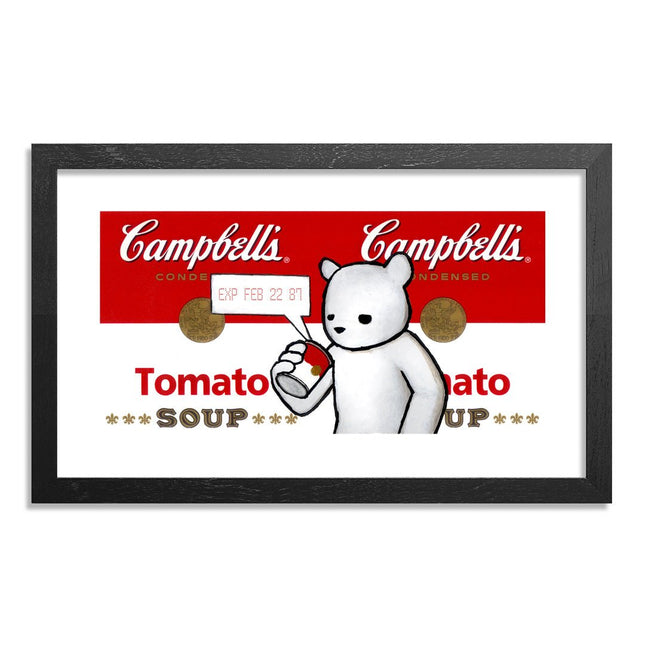
Luke Chueh Expiration Date Archival Print by Luke Chueh
Expiration Date Limited Edition Archival Pigment Print on 290gsm Moab Fine Art Paper by Luke Chueh Graffiti Street Artist Modern Pop Art. In 2003, Chueh moved to Los Angeles to further pursue a career in design. However, a lack of employment opportunities left him resorting to painting as a way to keep busy. From there, he got his start showing in the Los Angeles underground art scene, specifically in the Cannibal Flower art shows.
$215.00
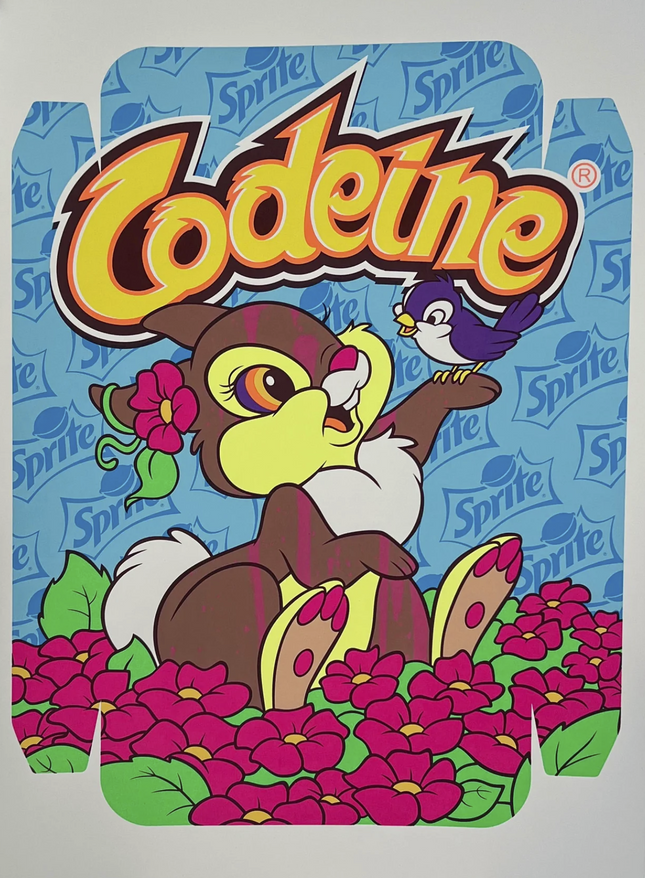
Ben Frost Lean on Me #1 Silkscreen by Ben Frost
Lean on Me 1 HPM Silkscreen by Ben Frost 12-Color Screen Print on MEDIUM Limited Edition Pop Street Art Artwork. 2022 Signed 1/1 Unique Artwork Size 18x24 Codeine Bunny Ben Frost Lean on Me Screen Print - Unique 1/1 Print (1) 12-color hand-pulled screenprint on Mohawk Superfine UltraWhite 160 lb cover 18 x 24 in., 45.7 x 61 cm Unique 1/1 print, Signed & Numbered by Ben Frost
$1,134.00
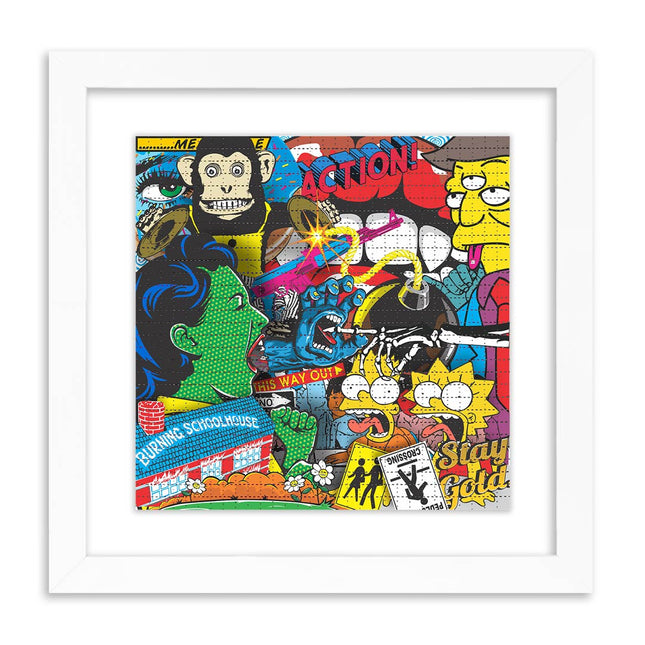
Denial- Daniel Bombardier LSDelinquent Blotter Paper Archival Print by Denial- Daniel Bombardier
LSDelinquent Blotter Paper Limited Edition Archival Pigment Print Art on Perforated Blotter Paper by Denial pop culture LSD artwork. 2019 Signed Limited Edition of 50 Artwork Size 7.5x7.5 In 2000 he adopted the moniker ‘DENIAL’ as a means of poking fun at advertising, politics, and media messages that contemporary society is often ‘in denial about. Since then he has maintained an ongoing global street-campaign of over 500, 000 stickers, placards, and murals, using the alpha-numeric characters ‘D3N!@L’. Intended as a conceptual means of marketing absurdism, DENIAL also challenges traditional notions of graffiti and public art through his bold and often satirical visual subversions. Denial’s art is strongly political and social since the artist takes specific positions against issues, such as capitalism, consumer culture, and advertisements. More importantly, the artist is aware of his choices and motivations: “I like to think of myself as activist pop art. How I relate with cartoons and graphics is a lot easier than I do with photo-realistic stuff" Another aspect of Denial's work is humor. His work is satirical, which, by definition, means that it uses humor as a confronting mechanism.
$422.00
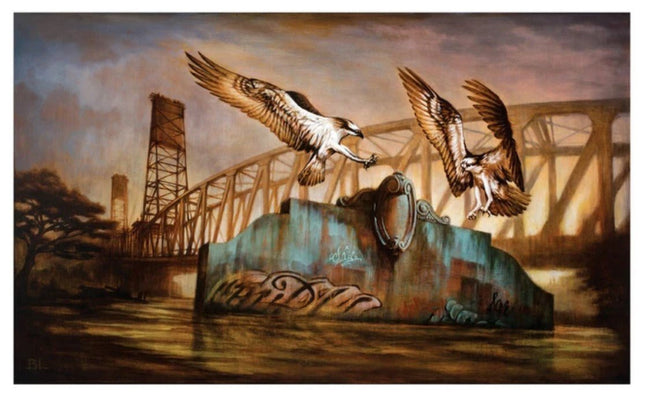
Brin Levinson Remnants Angels Giclee Print by Brin Levinson
Remnant's Angels Artwork Giclee Limited Edition Print on Fine Art Paper by Pop Culture Graffiti Artist Brin Levinson. Brin Levinson - "Remnant's Angels" Limited edition fine art giclee print Signed and numbered by the artist Edition of 25 copies 12" x 18"
$99.00
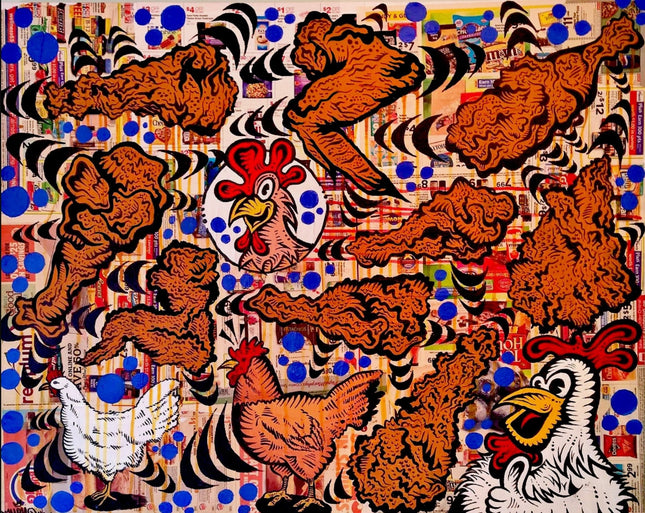
Damon Johnson Crown Fried Archival Print by Damon Johnson
Crown Fried Limited Edition Archival Pigment Fine Art Prints on Cotton Fine Art Paper by Graffiti Street Art and Pop Culture Artist Damon Johnson. 7 by 22 inch archival cotton paper edition of 10 signed and numbered. Crown Fried Archival Print by Damon Johnson
$283.00











